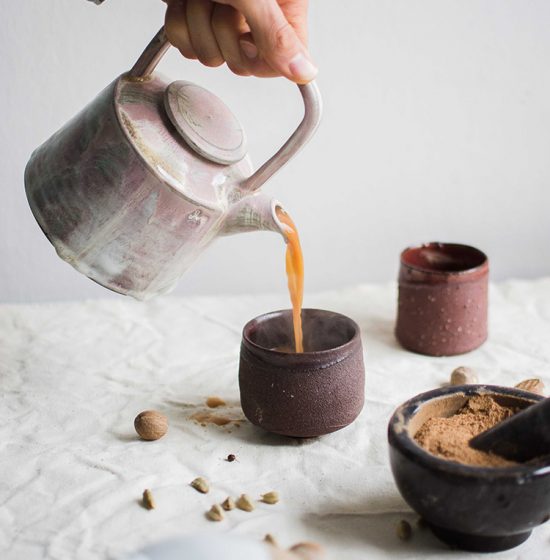
Serving per person:
8 oz water
4 oz milk or alternative milk (I’ve been using oat milk.)
4 crushed cardamom pods
10 fennel seeds
1/4 inch diced ginger root
1 star anise
1 cinnamon stick
1 black tea bag or loose herb equivalent
Simply multiply the ingredients per the number of people you’re serving. I typically don’t add more than 1 cinnamon stick and 1 star anise total.
How to cook it: Pour the water and milk into a sauce pan and turn on the heat. Add all the spices except the black tea. Bring the tea to a boil and simmer for one minute or until the spices become aromatic. Take the pan off the burner and add black tea. I usually cut a black tea bag open and mix it into the tea. Allow the tea to steep for 3-5 minutes. Strain the tea or pour it into a tea pot. Enjoy some delicious homemade chai tea! You may want to add a teaspoon of honey for sweetness.
Chinese herbal medicine has been an essential medical practice in China for 3,000 years. Food is commonly prescribed as medicine, and most of the ingredients in this tea are listed in Dan Bensky’s 3rd edition of the Chinese Herbal Medicine: Materia Medica. According to this text, we can take a look at how this chai tea can be used to treat digestion symptoms like abdominal pain and distention, nausea, and diarrhea, among other conditions.
The cardamom cluster or Bai Dou Kou is in the Transform Dampness category of herbs. It is warm, acrid, and mildly aromatic and enters the Lung, Spleen, and Stomach meridians. This herb moves qi, transforms dampness, and strengthens the Stomach, so it helps with fullness in the epigastrium and a lack of appetite. It warms the middle and helps alleviate nausea and vomiting due to Stomach cold or dampness from eating cold foods like smoothies or ice cream.
Ginger root or Sheng Jiang is dispersing in nature, benefits the Stomach, alleviates nausea, and transforms phlegm. It is acrid and warm and enters the Lung, Spleen, and Stomach meridians. Ginger is used in many dishes to aid in the elimination of toxicity found in other ingredients.
Fennel or Xiao Hui Xiang is in the Warm the Interior and Expel Cold herb category. It is acrid and warm and enters the Liver, Kidney, Spleen, and Stomach meridians. It regulates the qi in the Stomach for coldness causing abdominal pain, indigestion, reduced appetite, and vomiting. Fennel also treats lower abdominal pain and herniation caused by coldness.
Interestingly, fennel’s Chinese name means ‘small return fragrance’ because of its ability to restore the smell of rancid foods. A famous Chinese physician named Sun Si-Miao who lived in the 6th and 7th century was quoted in the Materia Medica that when fennel was added to boiling old meat, the rank odor disappeared, and when it was added as a powder to bad-smelling sauce, it became aromatic again. Perhaps for similar reasons, star anise is called Da Hui Xiang, which means ‘large return fragrance.’
Cinnamon bark or Rou Gui is in the Warm the Interior and Expel Cold herb category. It is hot, acrid, and sweet and enters the Heart, Kidney, Liver, and Spleen meridians. Cinnamon strengthens and warms the Kidney, Spleen, and Heart yang, especially for symptoms like aversion to coldness, cold limbs, weak back, impotence, urinary frequency, abdominal pain and coldness, reduced appetite, and diarrhea. Among its many usages, it encourages the generation of qi and blood with other tonics.
Black tea is warm and astringent and may help to consolidate loose stool or treat cold-induced abdominal pain.
This recipe is not advised for people who sweat easily, have trouble regulating their body temperature, easily get headaches, tend to feel hot at night, or experience chronic constipation. Avoid this recipe in pregnancy.

Looks delicious, can’t wait to try it!